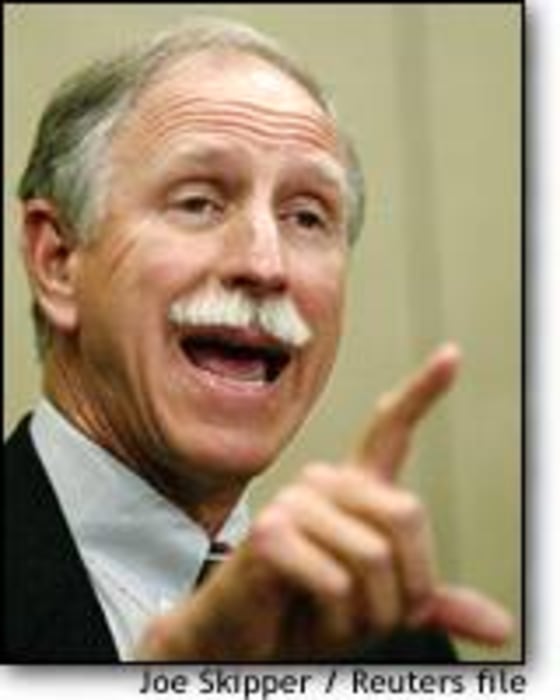A former astronaut overseeing NASA’s effort to resume shuttle flights said Thursday he sees no evidence of the kind of schedule pressures that contributed to the Columbia disaster. But he said it is too soon to judge whether the necessary safety changes are being made, or whether they will fulfill with the Columbia Accident Investigation Board’s recommendations.
“We have not yet seen the fundamental changes in the safety organization that have been recommended by the accident investigation board,” said Richard Covey, co-chairman of the task force put in place by NASA to monitor the return-to-flight effort.
The 26-member task force spent much of the past week at Johnson Space Center, reviewing the return-to-flight plan and meeting with shuttle program officials.
Is March realistic?
Covey said he supports NASA’s decision to work toward a tentative launch date of March — at the earliest — even though most believe that it is not a realistic goal and that next summer is probably the soonest a space shuttle will fly. He said it is nothing more than a planning date and is helpful in organizing the work to be done.
“The space shuttle program has been very clear that schedule is not a driver, a forcing factor, on their implementation of the recommendations, and we did not see that or sense that in any of the discussions we had with them this week,” Covey said.
“They are very sensitive, all of them who we talked to, are very sensitive to the idea of marching to a date and the impact that that has.”
Cost so far: $400 million
In their final report, released late last month, the Columbia investigators blamed a broken safety culture, in part, for the Feb. 1 tragedy, noting that too much emphasis was placed on meeting flight schedules.
All seven astronauts were killed when the shuttle broke apart over Texas during re-entry, 16 days after a chunk of foam tore a hole in the left wing.
In Washington, NASA Administrator Sean O’Keefe said Thursday the investigation and cleanup of the Columbia accident have cost the government nearly $400 million. That does not include all of the repairs and changes that will be necessary to get space shuttles flying again; that expense has yet to be determined.
Covey stressed that the task force will evaluate NASA’s responses to the investigation board’s 15 short-term recommendations for return to flight — not the 14 other long-term recommendations, many of them organizational. Those are outside the purview of his group, he said.
Among the short-term recommendations: eliminating foam insulation and other debris coming off the external fuel tank during launch, strengthening the thermal shielding on the shuttle wings, and devising ways for astronauts to inspect their ships and repair any damage in orbit.
Covey, a retired Air Force colonel, was the pilot on the first shuttle flight after the Challenger disaster. He now works for the Boeing Co.
